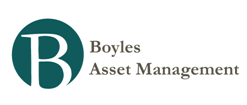Money and Finance
A major issue in this year's presidential campaign is the growing disparity between rich and poor, the 1% versus the 99%. While the president's solutions differ from those of his likely Republican opponent, they both ignore a principal source of this growing disparity.
- Hoisington Q1 2013 Letter
“The Federal Reserve is printing money”. No statement could be less truthful. The Federal Reserve (Fed) is not, and has not been, “printing money” as defined as an acceleration in M2 or money supply. Just check the facts. For the first quarter...
- John Mauldin: Can “it” Happen Here?
The beginning of the end of the Weimar Republic was some 89 years ago this week. There is a stream of opinion that the US is headed for the same type of end. How else can it be, given that we owe some $75-80 trillion dollars in the coming years, over...
- Hussman Weekly Market Comment: "illusory Prosperity" - Ludwig Von Mises On Monetary Policy
Illusory Prosperity - Ludwig von Mises on Monetary Policy"Credit expansion cannot increase the supply of real goods. It merely brings about a rearrangement. It diverts capital investment away from the course prescribed by the state of economic wealth...
- Hussman Weekly Market Comment: Why Quantitative Easing Is Likely To Trigger A Collapse Of The U.s. Dollar
A week ago, the Federal Reserve initiated a new program of "quantitative easing" (QE), with the Fed purchasing U.S. Treasury securities and paying for those securities by creating billions of dollars in new monetary base. Treasury bond prices surged on...
- Popular Delusions - 23 March 2010: When To Sell Gold - By Dylan Grice
Having a medium of exchange makes life easier than under barter economy and societies have always organised themselves around the best monetary standard they could find. Until industrialisation of the paper printing process, that happened to be gold,...
Money and Finance
How the Fed Favors The 1% - By Mark Spitznagel
A major issue in this year's presidential campaign is the growing disparity between rich and poor, the 1% versus the 99%. While the president's solutions differ from those of his likely Republican opponent, they both ignore a principal source of this growing disparity.
The source is not runaway entrepreneurial capitalism, which rewards those who best serve the consumer in product and price. (Would we really want it any other way?) There is another force that has turned a natural divide into a chasm: the Federal Reserve. The relentless expansion of credit by the Fed creates artificial disparities based on political privilege and economic power.
David Hume, the 18th-century Scottish philosopher, pointed out that when money is inserted into the economy (from a government printing press or, as in Hume's time, the importation of gold and silver), it is not distributed evenly but "confined to the coffers of a few persons, who immediately seek to employ it to advantage."
In the 20th century, the economists of the Austrian school built upon this fact as their central monetary tenet. Ludwig von Mises and his students demonstrated how an increase in money supply is beneficial to those who get it first and is detrimental to those who get it last. Monetary inflation is a process, not a static effect. To think of it only in terms of aggregate price levels (which is all Fed Chairman Ben Bernanke seems capable of) is to ignore this pernicious process and the imbalance and economic dislocation that it creates.
- Hoisington Q1 2013 Letter
“The Federal Reserve is printing money”. No statement could be less truthful. The Federal Reserve (Fed) is not, and has not been, “printing money” as defined as an acceleration in M2 or money supply. Just check the facts. For the first quarter...
- John Mauldin: Can “it” Happen Here?
The beginning of the end of the Weimar Republic was some 89 years ago this week. There is a stream of opinion that the US is headed for the same type of end. How else can it be, given that we owe some $75-80 trillion dollars in the coming years, over...
- Hussman Weekly Market Comment: "illusory Prosperity" - Ludwig Von Mises On Monetary Policy
Illusory Prosperity - Ludwig von Mises on Monetary Policy"Credit expansion cannot increase the supply of real goods. It merely brings about a rearrangement. It diverts capital investment away from the course prescribed by the state of economic wealth...
- Hussman Weekly Market Comment: Why Quantitative Easing Is Likely To Trigger A Collapse Of The U.s. Dollar
A week ago, the Federal Reserve initiated a new program of "quantitative easing" (QE), with the Fed purchasing U.S. Treasury securities and paying for those securities by creating billions of dollars in new monetary base. Treasury bond prices surged on...
- Popular Delusions - 23 March 2010: When To Sell Gold - By Dylan Grice
Having a medium of exchange makes life easier than under barter economy and societies have always organised themselves around the best monetary standard they could find. Until industrialisation of the paper printing process, that happened to be gold,...

